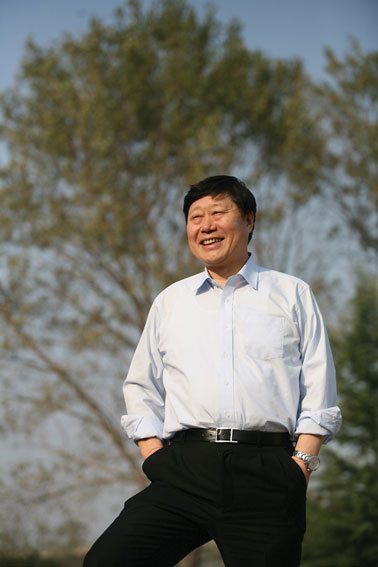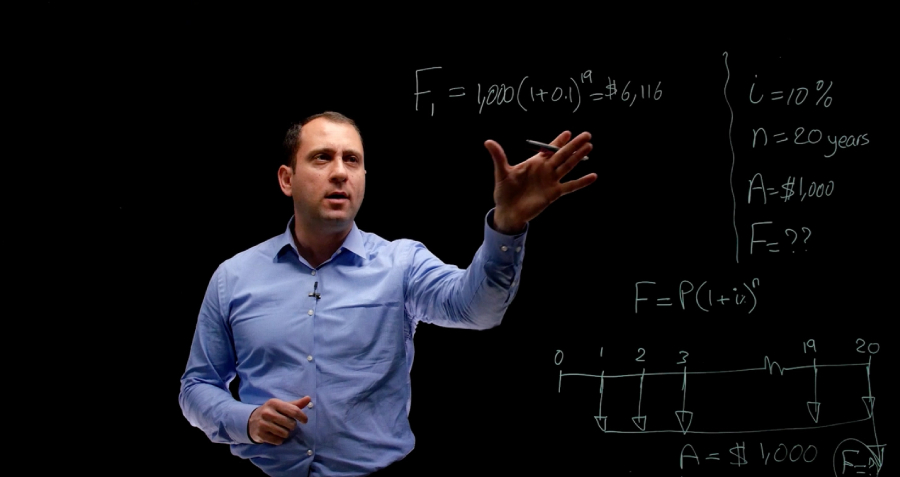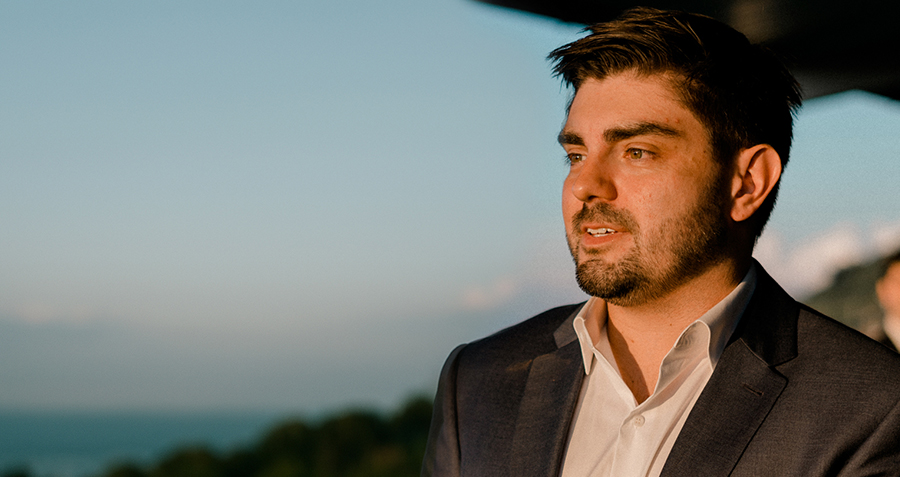
CEO Zhang Ruimin transformed a bankrupt appliance manufacturer into a respectable brand, and is disrupting Haier again.
It’s a story that has become a part of business folklore in China. In 1985, Zhang Ruimin, the young general manager of the loss-making Qingdao Refrigerator Plant, decided it was time to turn things around. He got his factory workers to smash 76 defective refrigerators with sledgehammers. To drive the point home—that there would be no tolerance for low quality—he delivered the first blow himself.
This moment marked a significant turning point in the history of Qingdao Refrigerator Plant (now known as Haier), so much so that the sledgehammer is now housed in the company’s in-house corporate museum. Three decades later, Haier is the world’s largest white goods manufacturer and boasts cutting edge innovation.
None of this would have been possible without CEO Zhang Ruimin at the helm. He led the company through several path-breaking business model changes, which helped the company build a strong brand, grow both organically and through acquisitions, globalize and evolve a business model where the company “gets close to the customer”. The beauty of it is that he forced the company to change even before competition or technology made it imperative that it did so.
Zhang is now leading the company through yet another transformation. He is, in essence, ‘breaking up’ the company and throwing rigid organizational structures and processes out of the window. The enterprise will, in effect, become an investment platform and the departments and divisions will be like entrepreneurial teams, which he calls “micro-enterprises”. The interplay between the two entities will be pretty much like that between investors and entrepreneurs—for the closest parallel, think of a Silicon Valley within a company.
This structure will flatten hierarchies, put in place a very strict performance-driven culture and set the focus exactly where it needs to be: on customer-driven innovation. The creation of an entrepreneurial ecosystem like this has far-reaching implications for everything: individuals, processes, work culture, internal competition, etc.
Haier’s story is already a case study in global business schools and the subject of some books. Zhang, who summarizes his management philosophy as: “Challenge yourself, overcome yourself”, is being acknowledged globally for his somewhat radical ideas on business and innovation. We sat down with Zhang, who is in the process of disrupting Haier yet again, to understand his management philosophy.
Q. Even when Haier was a very small company and relatively unknown outside of China, you would benchmark it with the best of the world, like GE, to measure performance and shortcomings. Also your strategy was to always go to the more advanced countries first and go to the developing countries later. Why?

A. Compared with those brands, Haier was significantly lagging behind [when I took over]. The best way to narrow the gap is to compete with them on the same stage. By doing this, our shortcomings would be exposed. Take GE. We have learnt a lot from competing with GE, and of course, from cooperating with GE. We absorbed GE’s Six Sigma and many other lessons. For Haier, it was more about learning while competing with those well-established brands.
Q. Academics who have studied Haier, often say you have been more aggressive about reinvention than any other company, and have always done it before the need arises. How did you, as someone who has headed the company for over three decades, foresee that the current business model was becoming obsolete?
A. We felt the threat a few years back and the chief reason is that the boundary between an organization and customers no longer exists. The real shock to Haier really came from e-commerce. E-commerce platforms are able to reach a broader user base and offer much lower prices. In other words, the internet blurred the line between organizations and consumers. In a sense, we were forced to make a change. Hence, we came up with the model of connecting orders with personnel because if we want to meet users’ particular needs, we will have to connect the staff with the users. In order to succeed in this, the old structure must be dismantled.
We also saw this as a good opportunity because the bigger the company grows, the harder the restructuring will be. Therefore, we accelerated our restructuring progress and flattened the hierarchy.
Q. Big companies with long histories find it very hard to change because of rigid structures. But you have changed Haier several times already and you are doing it yet another time. How easy is it to mobilize an entire organization (of 70,000 employees when you started this journey) towards a radically different way of working? How do you deal with the pain and dissent that comes during the transition?
A. This is a very key issue because transitions will inevitably affect some peoples’ interests. We have many senior executives sitting high on the hierarchy and their status might be lowered after the transition. There also are some people who joined Haier very early and they might be a bit, so to speak, “outdated”. They might be left out as time goes by.
The path we took is to change people’s mindset first. Do people agree to transition? They might say no. But if we don’t change, we might end up in a deadlock. We need to first change the mindset, and then the organization.
A company is like a very delicate machine, which is very dangerous in the Information Age. Now we’ve convinced people that in today’s context, a company must be made of an army of smaller enterprises.
Q. How have your leadership skills evolved during different stages of Haier’s growth? I’m assuming that the kind of skills needed when Haier was on the brink of failure when you took over are very different from the kind that you need today, when Haier is very successful and global, and you want to push it to the next phase of evolution.
A. There actually is a guiding thread right from the beginning. First and foremost, we will always challenge ourselves. This is rarely seen in other enterprises which stick to the model that made them successful. We have always been a firm believer of the notion that time will always change ahead of us. Hence, if we realize that it is time to change and make a move before the actual change happens, we might still have a chance. So whether we are speaking of leadership style or corporate culture, this is a very critical guideline for us.
Additionally, we’ve always trusted our employees in creating values spontaneously. Back in the 80s and 90s, we started to let our smaller teams be self-governed, and allowed employees to unleash their energy voluntarily. Unlike nowadays, people back then were relatively isolated. You can only maximize certain employees’ outputs. To date, we are still insisting that employee potential should be fulfilled to the maximum. As German philosopher Immanuel Kant said, human beings should be treated as ends rather than as means. The biggest difference we see in today’s workplace is that people are no longer restrained within an enterprise, but they are free individuals in the society. So we are also trying to absorb outside resources.
Q. You have a very non-traditional view of organizational hierarchies, very different from Western companies and very different from Chinese companies. Why are you, for instance, trying to cut out the middle management layer?
A. We have experienced an evolution. In the past, Haier’s culture was more or less the same as other companies and [the implementation culture] was even stricter than others. The middle management layer played a very important role at Haier because when a new policy was enacted, they were the ones who implemented it.
Regardless of how other organizations execute, at Haier, everything needed to be executed in its full force. But later, when we came to the internet era, we found that implementing everything perfectly might actually undermine Haier’s competitiveness.
For instance, we would draft plans for our new products every Spring and Fall. But many products failed in the market. Then we realized that this is all due to the internet. Online shoppers want to communicate, exchange views and compare all the products available. We realized that the old model of implementing and executing everything precisely will no longer work. Consequently, we realized that every employee should spontaneously communicate with the customers and create value.
Q. Major transitions like this also create a sense of unease among employees. Things they are used to—processes, reporting structures, performance measures, internal competition—get shaken up overnight and comfort zones vanish. To what extent is this sense of unease and the lack of a comfort zone healthy or unhealthy? Do you as CEO have to step in and manage that so that employee engagement, a crucial component of organizational well-being, is not lost in the process?
A. Although Haier has been through several transitions the current one is totally different from the previous transitions. We set clear goals for our previous transitions, and we were learning from Japanese or American enterprises, because many big international companies have had similar experiences. However, nobody has experienced the current transition before. We can’t learn from other enterprises at all, so we have to start from scratch.
Regarding employees, this has huge impact on them. In the past, employees would do what they’ve been told to do, while now they have to build a business of their own. This is extremely different so many employees are feeling a sense of unease. But we are not transitioning in one go, but gradually letting them adjust to the changes.
Q. What about employee motivation? In the past, if an employee performed very well, he or she could get more salary or a bonus. In the new Haier, what would the performance measures be like?
A. We used to have a very strict scheme to evaluate employees and then give them bonuses accordingly. It was very complicated. Now users are the core of our development. He who has driven users should be paid in [accordance] with the results he created. He could know the salary before he starts the business and his salary is not decided by the corporation. Initially, this scheme was hard to accept for the employees, but they are gradually adapting.
Q. When we have such a huge amount of innovation happening everywhere in the organization, there will also be some failure: ideas that took up resources but didn’t work out. How does Haier as an organization view failure?
A. This is a key issue. If you don’t change or transform, you might not look like you’ve failed. But in that case, the entire organization will become a failure. If you do, failures are inevitable. This will come down to how tolerant the corporate culture is. But for me, I need to think of how I can curb the failure ratio. Micro-enterprises must be industry leaders and they need to be evaluated as well. If the micro-enterprises are not performing well, they will be told to stop at any time. Now we are trying to keep the number of failed micro-enterprises as low as possible. Although it sounds easy, the real management is much harder.
Q. How does Haier’s culture need to evolve as it goes global to different kinds of cultures and geographies?
A. First of all, the way Haier is different from any Japanese or East Asian companies is that at Haier global offices, whether in terms of team leaders or employees, they are all local people. Secondly, local employees [irrespective of where they are] earn by creating value for local customers. The result might show in our market data, but our basic aim is to encourage them to create value for end customers. This is different from many big companies that pay and subsidize overseas staff according to their job titles. This strategy of Haier is still a work-in-progress and needs a stronger push, but the majority of our staff is starting to adopt it. If someone finds it hard to digest, then he or she might just be replaced by some other candidate.
Q. What is the biggest risk in this transformation?
A. The biggest challenge right now is whether the self-governed entrepreneurial units will work. It could be hard for them to show some instant results right after the transformation.
From the beginning till now, the biggest challenge has always been management. Many people can’t change their mind. To dig deeper, the reason why they can’t change is mainly because of their profit. In the past, I got what I deserved after finishing my work, but now things are totally different.
Q. How do you see your own role change in the new Haier?
A. My job now is more like a designer. How can I push the old Haier into a new organization? For example, the old Haier is an aircraft carrier, but [now] we have a fleet.
Q. A lot of what Haier has been able to achieve is due to your own forward thinking capabilities, your own vision. What are you doing to cultivate that vision and forward thinking capability in other people at Haier?
A. This is very difficult because, taking this transition for example, it was brought up very long ago. Employees, including some senior executives didn’t quite understand where this came from. So how can I pass this on to them? This is not easy work. On the [managerial] back end, if they can’t show any visible results after we illustrated an idea thoroughly, then we have no other choice but to ask him or her to leave. As a matter of fact, more than 50% of the [former] vice-presidents at Haier have left. On the contrary, those who can innovate and think outside the box will be greatly valued and favored.



















